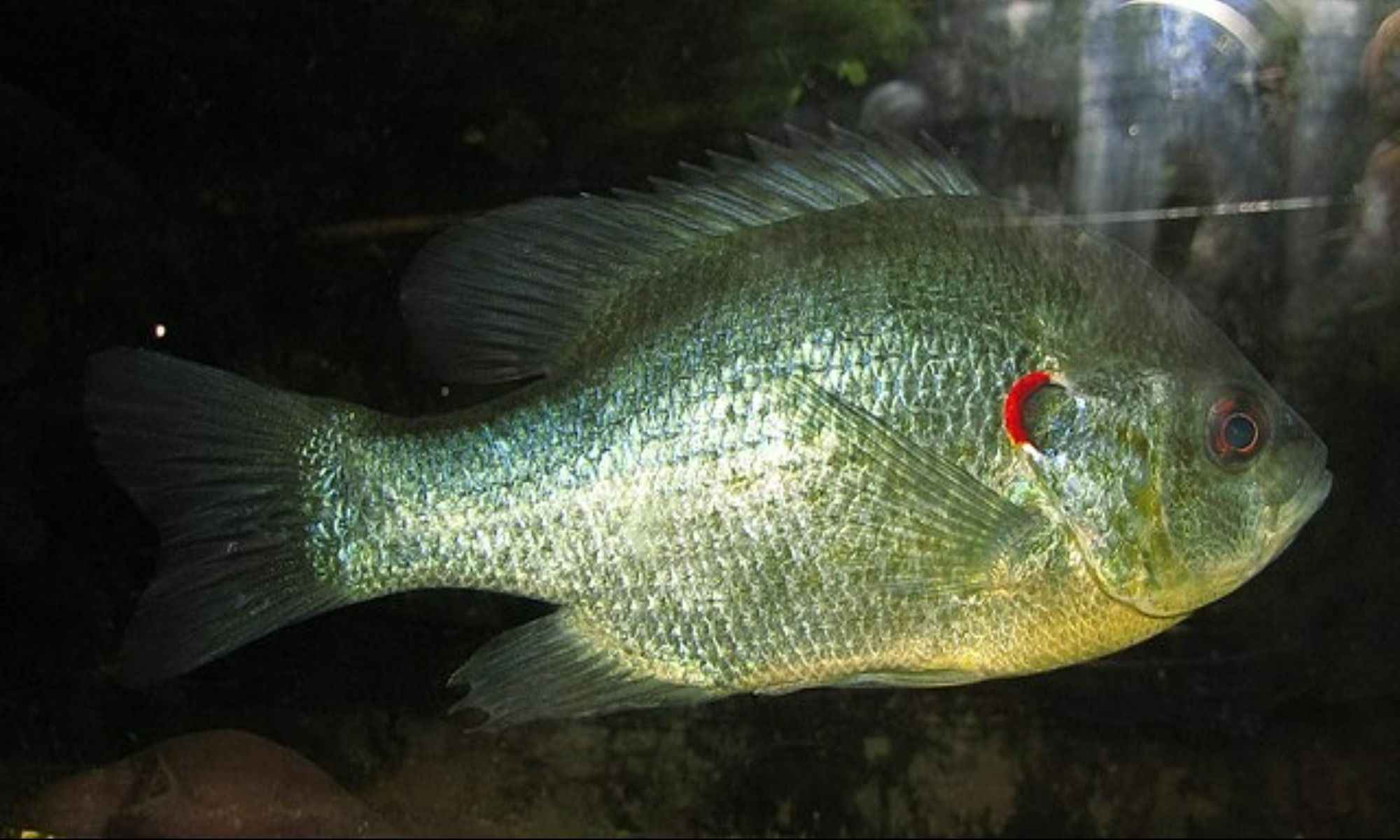The Best Baits for Fishing Redear Sunfish
Use these tips and tricks the next time you're looking to land redear sunfish aka shellcrackers on your next fishing trip.

Redear sunfish, also known as shellcracker bream or chinquapin, are among the most common members of the sunfish family. Their cousins, the bluegill, are the most popular species of sunfish and panfish to target by freshwater anglers. But compared to their cousins, redear sunfish are larger and have different operculum colors. You can distinguish a redear sunfish by its gill flaps with a reddish or orange crescent moon-shaped spot. These fish can live up to six years and grow up to three pounds heavy.

Another characteristic that differentiates redear sunfish from other species in its family is their ability to crush the shells of certain forage, earning them the nickname "shellcrackers." This is because they have pharyngeal teeth in their throat, which allow them to grind hard shells of snails, mussels, and other mollusks. You’ll find that redear sunfish cohabitate well with bluegill and bass because they’re not fighting over the same food.
Shellcrackers are much harder to target than bluegill because they don’t prolifically spawn, and they tend to inhabit deeper water. Their spawning season is also a narrower window, so you have less time to try and target them. This is where using the right baits comes in. Here’s what an angler needs to know and use to lure shellcrackers:

When to Fish for Redear Sunfish
Before discussing what baits you should use, you need to know the best time to target redear sunfish. Like most fish, they are best targeted during their annual spawning season in the spring. It happens a month earlier than the bluegill spawning season, usually around March or April. You should expect the ideal best fishing conditions is between 70-74 degrees Fahrenheit.
If you miss the magic window of fishing for them when they spawn, you’ll find them in deeper waters where it’s harder to catch them. The best months to target them vary depending on the state and its climate. Generally, spring to early summer is the best time. A good tip is to try searching for them a month before bluegill spawn in your locality.
Where to Find Them
Redear sunfish have become a wide-ranging fish as they’ve been introduced to states where they’re not natives. They are most prominent in southeast states, but they can be found in California, Arizona, Indiana, Illinois, Ohio, and Virginia. You can usually find their cousins such as green sunfish and longear sunfish in these areas as well. A good thing to remember is that they can be found where freshwater fishing targets like largemouth bass, smallmouth bass, rock bass, spotted bass, channel catfish, and some small fish are.
Shellcrackers don’t like being in water that has a lot of currents. This means you can find them in calm waters such as the bottom of ponds, lakes, and reservoirs. In rivers and creeks where water flows fast, you might find them in the slower sections or backwaters. They also like areas with vegetation because they are amazing habitats for their prime forages like mollusks and crustaceans.
If you find other sunfish species in a certain area, look for redear sunfish in the deeper parts instead of an area with shallow water. Another good tip is to search anywhere with hard or soft covers or structures like logs, treetops, stumps, grass, and lily pads.
A good place to start your search during spawning is in water depths of 3 feet or more, where their spawning beds are typically located. They also like to set up spawning spots under hard covers submerged up to 10 feet like stumps and treetops. Popular bluegill fishing spots can also be a helpful point of reference.

In America, Kentucky Lake and Lake Barkley are some of the most popular places for redear sunfish angling.
Best Baits for Redear Sunfish
Excellent baits for redear sunfish are usually natural options that are readily available such as:
1. Worms
Red worms, mealworms, and nightcrawlers work very well for shellcrackers. Larger worms should be cut into halves or thirds. When threading them through your hook, don’t bunch them up so they can wiggle and attract the fish. Waxworms, catalpa worms, and leeches can work as well. If you want to use a plastic worm, make sure it can imitate natural movement and color of a live bait or natural bait counterpart.
2. Crickets or Grasshoppers
Crickets and grasshoppers can work incredibly well as baits in areas with bluegill.
3. Grass Shrimp
You can find this type of bait in eelgrass beds. To get some:
- Sweep a fine-meshed, long-handled net between the top and bottom of eelgrass stalks.
- Store them in a cool, aerated tank.
- Insert a fine-wire hook where their carapace and tail intersect for a dynamic bait presentation.
4. Cut Up Fish
In their adulthood, some redear sunfish can feed on smaller fish. You can get their attention by presenting bits of crayfish tail or mussel.
Tips for Bait Presentation and More
1. Upsize Your Bait
Though smaller baits are better, sometimes upsizing your offering can yield more bites. Consider this if you’re not getting the bites you are expecting.
2. Avoid Artificial Lures
Artificial baits and lures aren’t as effective with redear sunfish because bream species like them are more akin to natural offerings. If you end up with no choice, choose a bait or lure that looks natural and that can imitate movement. An example would be a spinner bait.
3. Rig Placement
Redear sunfish are bottom feeders because their forage, such as mollusks, resides on the bottom of the water. Because of this, they won’t bother with plankton in open water or insects on the surface. You can go bottom fishing to target them where your rig places live baits on or above the water floor.
4. Angling Tips
Because they prefer deeper water, shellcrackers can be enticed when you use a jigging motion on your small baited hook off the bottom. Male redear sunfish can offer you tremendous light tackle fishing during nesting season. In close quarters, you can do some tight line fishing.
5. Use Floats
Use floats like slip floats to spread baits and cover more water. This helps you effectively cast in areas with clear waters, and the cover is sparse. Floats should maintain contact with the bottom, and your line should be kept tight.
Because they differ from other sunfish and panfish, redear sunfish can be your next exciting target. Next time you're out freshwater angling, study the tips in this guide and give your best to land a strike with the feisty and elusive shellcrackers.




